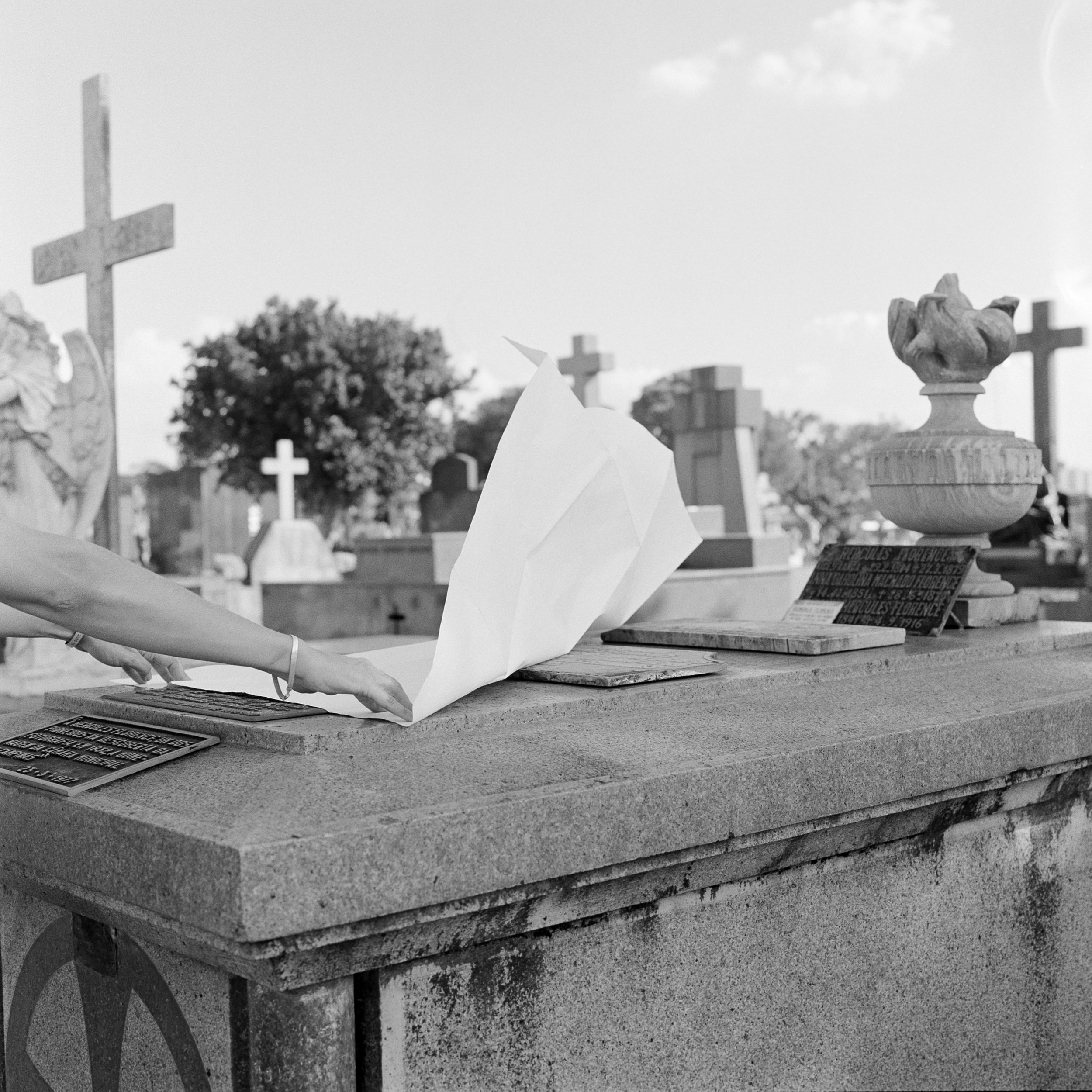TABULA RASA (2025)
07/03 - 19/04/2025
SOLO SHOW GALERIE SALON /H PARIS
Curator margaux knight
RESCUE OBJECTS (2024)
PARIS PHOTO / SECTEUR éMERGENCE
GALERIE SALON /H
TEASER / RECHERCHE EN COURS AVEC EMILIO AZEVEDO ET Alasdair Asmussen Doyle
RADICAR
05/04 - 31/05/2024 POUSH MANIFESTO PARIS
ALIMENTO
02/06 - 17/06/2023 LA CAPSULA & The SAE Greenhouse Lab ZURICH
DE BRAZILIAAN (2023)
08/06 - 08/07/2023 FONDATION FIMINCO ROMAINVILLE
video et pièce sonore en COLLABORATION AVEC Linda Caracciolo Borra
Depuis 2018, Livia Melzi travaille sur les questions identitaires brésiliennes et les rituels anthropophages et ce qu’ils témoignent des tribus étudiées, notamment à partir du Manifesto Antropofago d’Oswald de Andrade. S’intéressant, en parallèle à leur réception en Europe, et aux méthodes de muséographies constituées par les institutions occidentales, elle s’est passionnée pour les collections de manteaux de la tribu indienne Tupinambá, retirés du Brésil durant les premiers siècles de sa colonisation. On comprend que le travail de l’artiste se constitue tout à la fois de fascination esthétique que de recherches sociologiques, voire scientifiques. Elle n’y cache pas non plus une grande empathie pour ces populations qui se retrouvent dans un hors temps, comme coincées dans des traditions vernaculaires qu’ils rejouent aujourd’hui pour plaire aux touristes, mais représentent leurs seules ressources financières. Parmi cet héritage de la culture tupi, Livia Melzi a découvert Johan Maurits, ALLEMAND du 17 ème siècle envoyé dans les colonies brésiliennes et dont les richesses ont constitué les fondements du Mauritshuis de La Haye. « J’ai ainsi mené une enquête sur ce gouverneur du Brésil, qui a peut-être constitué avec sincérité et passion son cabinet de curiosité et sa collection ethnographique, mais dont le geste s’apparente à de la spoliation, précise-t-elle. A travers différents formats, comme la photogravure, que j’ai expérimentée durant la résidence, et la vidéo, j’ai souhaité interroger le regard que l’on pouvait porter actuellement sur lui, montrant en outre les plaques de la photogravure, tels des éléments fantomatiques qui s’effacent. » Johan Maurits est par ailleurs tangible avec ce plâtre qui a servi à l’édification de précédentes sculptures que l’artiste est allée chercher en Allemagne. Est-ce un geste, relativement doux, que l’on pourrait relier à la cancel culture ? Il poursuit ainsi un corpus fait de lecture de nombreuses sources, qui ne renie pas pour autant le plaisir de la forme. Livia Melzi construit l’ensemble de son approche par rapport à la connaissance, tout en prenant de plus en plus d’aisance pour s’en éloigner, afin de développer, sans cesse, cette question de comment transposer des images et un récit historique dans une autre époque et un regard nouveau.
MARIE MAERTENS Commisaire de l’exposition odyssées urbaines
SINCE 2018, LIVIA MELZI HAS BEEN WORKING ON BRAZILIAN IDENTITY ISSUES, ANTHROPOPHAGIC RITUALS, AND WHAT THEY REVEAL ABOUT THE INDIGENOUS COMMUNITIES SHE HAS STUDIED, IN PARTICULAR BASED ON OSWALD DE ANDRADE’S FOUNDATIONAL ANTHROPOPHAGIC MANIFESTO. IN PARALLEL TO HER INTEREST IN THESE TOPICS AND THEIR RECEPTION IN EUROPE, AS WELL AS THE MUSEOGRAPHIC METHODS EMPLOYED BY WESTERN INSTITUTIONS, SHE BECAME FASCINATED BY THE COLLECTIONS OF CLOAKS BELONGING TO THE TUPINAMBÁ INDIGENOUS COMMUNITY, EXPORTED FROM BRAZIL DURING THE FIRST CENTURIES OF ITS COLONIZATION. THE ARTIST’S WORK IS THUS AT ONCE COMPOSED OF AESTHETIC FASCINATION AND SOCIOLOGICAL, EVEN SCIENTIFIC, RESEARCH. MOREOVER, SHE DOES NOT CONCEAL A GREAT EMPATHY FOR THESE POPULATIONS WHO FIND THEMSELVES SOMEWHAT OUT OF TIME, AS IF TRAPPED IN VERNACULAR TRADITIONS THAT THEY RE-ENACT TODAY TO PLEASE TOURISTS, WHILE REPRESENTING ALMOST THEIR ONLY SOURCE OF INCOME. AMONG THIS LEGACY OF TUPI CULTURE, LIVIA MELZI DISCOVERED JOHAN MAURITS, A 17 TH -CENTURY GERMAN SENT TO THE BRAZILIAN COLONIES, WHOSE WEALTH SET THE GROUNDS OF THE MAURITSHUIS ART MUSEUM IN THE HAGUE. “I INVESTIGATED THIS DUTCH GOVERNOR OF BRAZIL, WHO MAY HAVE BUILT UP HIS CABINET OF CURIOSITIES AND ETHNOGRAPHIC COLLECTION WITH SINCERITY AND PASSION, BUT WHOSE ACTIONS WERE AKIN TO SPOLIATION,” SHE EXPLAINS. “THROUGH DIFFERENT FORMATS, SUCH AS VIDEO AND PHOTOGRAVURE, WHICH I EXPERIMENTED WITH DURING THE RESIDENCY, I WANTED TO QUESTION THE WAY WE MIGHT LOOK AT HIM NOWADAYS, SHOWING THE PHOTOGRAVURE PLATES AS GHOSTLY ELEMENTS THAT FADE AWAY.” JOHAN MAURITS IS ALSO TANGIBLE IN THE PLASTER USED TO BUILD PREVIOUS SCULPTURES, WHICH THE ARTIST FETCHED FROM GERMANY. WOULD IT BE A RELATIVELY GENTLE GESTURE THAT COULD BE LINKED TO THE CANCEL CULTURE? SUCH IS THE CONTINUATION OF A BODY OF WORK BASED ON THE READING OF NUMEROUS SOURCES, WITHOUT DENYING THE PLEASURE OF FORM. LIVIA MELZI CONSTRUCTS HER ENTIRE APPROACH IN RELATION TO KNOWLEDGE, WHILE BECOMING INCREASINGLY AT EASE WITH DISTANCING HERSELF FROM IT, IN ORDER TO CONSTANTLY DEVELOP THE ISSUE OF HOW TO TRANSPOSE IMAGES AND A HISTORICAL NARRATIVE INTO ANOTHER ERA AND A NEW WAY OF LOOKING AT THINGS.
imago lisboa 2023
28/09 - 07/01/2024 MNAC - Museu Nacional de Arte Contemporânea
PRIX EMOP 2023
10/05 - 28/10/2023 ARENdt HOUSE LUXEMBOURG & Musée National d’histoire et d’art Luxembourg
LA CROYANCE
10/02 - 5/04/2023 GALERIE LE SALON H PARIS
AUTOPORTRAIT II (2022)
tirage par diamantino quintas
Cadre PAR APRÈS MIDI LAB
COLLECTION PRIVÉE
TUPI OR NOT TUPI - édition
design : tassiana Nunes costa texte : lior zalis 200 exemplaires signés et numérotés







TUPI OR NOT TUPI
OCT NOV 2022 - PALAIS DE TOKYO PARIS
L’artiste propose ici une enquête sur la représentation occidentale de capes sacrées fabriquées par les tribus guerrières Tupinambá du Brésil et utilisées à l’origine lors de rituels anthropophages. Elle met en lumière les discours construits autour de ces artefacts cultuels dont il ne reste que quelques exemplaires (tous conservés par des musées européens) tout en faisant se rencontrer arts de la table français, récits de voyage coloniaux et anthropophagie culturelle (une forme d’hybridité, voire d’absorption, de différentes cultures).
Alors qu’est célébré cette année le centenaire de la « Semaine d’Art Moderne», manifestation littéraire et artistique à l’origine du modernisme brésilien, le titre de cette exposition est inspiré par le Manifeste anthropophage d’Oswald de Andrade, publié en 1928 dans son sillage. Dans ce texte à la fois poétique, philosophique et politique, l’auteur écrit notamment : « Tupi or not tupi, that is the question ». Cette citation emblématique (en anglais dans l’original), est autant une célébration des Tupinambá et de leurs pratiques rituelles qu’un exemple métaphorique de cannibalisme : le texte incorpore Shakespeare avec cette référence à la célèbre tirade d’Hamlet, « To be or not to be ».
Here, the artist undertakes an investigation into the Western representations of sacred cloaks made by the Tupinambá warrior tribes of Brazil which were originally worn during anthropophagic rituals. She sheds light on the discourses constructed around these religious artefacts, of which only a few examples remain (exclusively held by European museums), while bringing together French arts de la table, colonial travel stories and cultural anthropophagy (a form of hybridity, or even absorption, of different cultures).
To mark the celebration of the centenary of the "Modern Art Week", a literary and artistic event which in 1922 marked the genesis of Brazilian modernism, the title of this exhibition draws on Oswald de Andrade's Anthropophagic Manifesto, published in 1928 in the wake of the landmark festival. In this text at once poetic, philosophical and political, the author muses: "Tupi or not tupi, that is the question." This emblematic quote (in English in the original)
is as much a celebration of the Tupinambá and their ritual practices as it is a metaphorical example of cannibalism: the text incorporates Shakespeare through reference to Hamlet's famous monologue, "To be or not to be".
Curatrice / Curator: Daria de Beauvais
Assistante curatoriale / Curatorial Assistant: Lisa Colin
Chargée de production / Production Manager: Raphaële Mas
Régisseur d’exposition / Exhibition Registrar: Hugo Lermechin
Régisseur audiovisuel / Audiovisual Registrar: Wilfried Julien
Régisseuse des œuvres / Registrar: Sarah Gratadour
Scenographie / scenographie: amanda antunes
PLAT DE RÉSISTANCE (2022)
Brésilienne de naissance et française d’adoption, Lívia Melzi joue de cette double culture dans le Grand Salon de l’Ambassade du Brésil à Paris, pièce de réception ornée de panneaux en bas-relief représentant des scènes de chasse. L’artiste y a tourné sa première œuvre vidéo, mettant en scène de manière quasi-documentaire l’art de la table à la française avec une musique d’inspiration brésilienne. Un maître d’hôtel dresse ainsi une table dans les règles de l’art, avec argenterie, verres de cristal et vaisselle en porcelaine fine de Limoges provenant des collections de l’Ambassade.
L’artiste met en parallèle cette tradition avec les rituels anthropophages, très élaborés et aujourd’hui disparus, des tribus Tupinambá. Le plat de résistance de ce repas « anthropophage » apparaît dans la vidéo : il est constitué des membres du président du Palais de Tokyo, également directeur artistique du Salon de Montrouge dont l’artiste est lauréate du Grand Prix. Ses bras et jambes ont été moulés en plâtre et sont disposés ici, offerts métaphoriquement à notre appétit.
Ce repas est symboliquement organisé par Lívia Melzi en l’honneur du centenaire de la «Semaine d’Art Moderne». Organisée en 1922 à São Paulo, cette manifestation artistique réunit littérature, poésie, peinture, sculpture et musique. Elle est considérée comme fondatrice du modernisme au Brésil, mouvement de rupture fondateur avec la tradition académique, mêlant avant- garde européenne et culture brésilienne dans tous les domaines de la création. LA «résistance » du titre de cette œuvre est ainsi polysémique, à la fois plat principal et force d’opposition aux récits dominants.
Brazilian by birth and French by CHOICE, Lívia Melzi plays upon her double culture in the Grand Salon of the Brazilian Embassy in Paris, a majestic reception room decorated with bas-relief panels depicting hunting scenes. It was in this setting that the artist shot her first video work, which functions almost
as a document of French arts de la table. A maître d’hôtel sets out the table according to the most refined French customs, with silverware, crystalware and fine Limoges porcelain from the Embassy’s collection.
The artist places these traditions in dialogue with the anthropophagic rituals of the Tupinambá tribes, equally elaborate but today extinct. The plat de résistance of this "anthropophagic" dinner appears in the video: it is made up of the limbs of the president of the Palais de Tokyo, who is also the artistic director of the Salon de Montrouge where Lívia Melzi was awarded the Grand Prix. His legs and arms have been moulded in plaster and are here set out before us, a metaphorical offering to satisfy our appetites.
This meal is symbolically organised by the artist in honour of the centenary of the "Modern Art Week" that took place in 1922 in São Paulo. This event brought together literature, poetry, painting, sculpture and music. It is considered as the founding moment of modernism in Brazil, a movement that broke with academic tradition and blended European avant-gardism with Brazilian culture across every domain of the arts. The "resistance" in the title of this work is thus polysemic, both main dish and opposition force to dominant narratives.
Co-réalisation et image: Joana Luz Montage: Juliana Munhoz Color grading et finalisation: Samanta do Amaral Musique: João Camarero Crane opérateur: Bashkam Gaffer: Fréderic Borja
AUTOPORTRAIT II (2022)
LES TUPI, PEUPLE AUTOCHTONE DU BRÉSIL, ONT LAISSÉ PAR MÉTISSAGES SUCCESSIFS UN HÉRITAGE CONSIDÉRABLE DANS LA CULTURE DU PAYS. FORMANT UNE POPULATION D’ENVIRON DEUX MILLIONS D’HABITANTS AU DÉBUT DE LA COLONISATION, CES TRIBUS GUERRIÈRES SONT DÉCIMÉES À PARTIR DU SEIZIÈME SIÈCLE LORS DES PREMIERS CONTACTS AVEC LES EUROPÉENS. LES TUPINAMBÁ (ÉTYMOLOGIQUEMENT « LES PLUS ANCIENS », « LE PEUPLE ANCESTRAL ») EN SONT UN DES GROUPES ; LEURS DESCENDANT·ES VIVENT AUJOURD’HUI DANS LES FORÊTS TROPICALES MENACÉES D’AMAZONIE ET SUR LA CÔTE ATLANTIQUE.
LÍVIA MELZI INITIE EN 2018 UNE RECHERCHE SUR LES CAPES TUPINAMBÁ. COMPOSÉES PRINCIPALEMENT DE PLUMES ET CONSIDÉRÉES COMME SACRÉES, ELLES ÉTAIENT PORTÉES LORS DE RITUELS ANTHROPOPHAGES. IL N’EN RESTE PLUS QUE HUIT EXEMPLAIRES D’ORIGINE, TOUS CONSERVÉS PAR DES MUSÉES EUROPÉENS. L’ARTISTE DOCUMENTE PAR LA PHOTOGRAPHIE LES DISPOSITIFS MUSÉOLOGIQUES ET LES DISCOURS DÉDIÉS À CES TENUES, SÉCULARISÉES DERRIÈRE DES VITRINES OU DANS DES RÉSERVES.
SES RECHERCHES ET PRISES DE VUE ONT PERMIS DEPUIS 2020 UNE PERSPECTIVE DE RÉAPPROPRIATION, EN DIALOGUE AVEC GLICÉRIA TUPINAMBÁ (ARTISTE, ACTIVISTE ET LEADER AUTOCHTONE D’UNE COMMUNAUTÉ SITUÉE DANS L’ÉTAT DE BAHIA). CETTE DERNIÈRE, APRÈS AVOIR RÉALISÉ UNE PREMIÈRE CAPE SANS MAÎTRISER LES TECHNIQUES ANCESTRALES, A UTILISÉ AUSSI DES IMAGES POUR RETROUVER CES TECHNIQUES PERDUES JUSQU’ALORS, AFIN D’EN CRÉER UNE NOUVELLE QU’ELLE PORTE FIÈREMENT SUR CET AUTOPORTRAIT. CELLE-CI N’EST PAS CONSIDÉRÉE COMME UN ARTEFACT MAIS COMME L’AFFIRMATION D’UNE IDENTITÉ ET D’UN POUVOIR, UN SIGNE POLITIQUE DE RÉSISTANCE CULTURELLE DANS LA LUTTE POUR LA RESTITUTION DES TERRITOIRES AUTOCHTONES.
ACROSS GENERATIONS OF MÉTISSAGE, THE TUPI – AN INDIGENOUS PEOPLE IN BRAZIL – HAVE LEFT A CONSIDERABLE MARK UPON THE COUNTRY’S CULTURAL HERITAGE. THOUGH THEY NUMBERED AROUND TWO MILLION AT THE START OF THE COLONIAL ERA, THIS WARRIOR TRIBE WAS DECIMATED FROM THE SIXTEENTH CENTURY ONWARDS FOLLOWING ITS FIRST CONTACTS WITH EUROPEANS. THE TUPINAMBÁ (DERIVED ETYMOLOGICALLY FROM "THE MOST ANCIENT", "THE ANCESTRAL PEOPLE") WERE ONE OF THE MANY BRANCHES OF THE TUPI PEOPLE; THEIR DESCENDANTS TODAY LIVE IN THE THREATENED AMAZON RAINFOREST AND ON THE ATLANTIC COAST.
IN 2018 LÍVIA MELZI BEGAN A RESEARCH PROJECT ON THE TUPINAMBÁ CLOAKS. LARGELY MADE UP OF FEATHERS AND CONSIDERED AS SACRED, THEY WERE DONNED DURING ANTHROPOPHAGIC RITUALS. TODAY ONLY EIGHT ORIGINAL CLOAKS REMAIN, ALL OF THEM IN THE COLLECTIONS OF EUROPEAN MUSEUMS. THE ARTIST USES PHOTOGRAPHY TO DOCUMENT MUSEUM DISPLAYS AND DISCOURSES THAT PRESENT THESE SACRED OUTFITS IN THE SECULAR CONTEXT OF THE VITRINE OR THE RESERVE.
SINCE 2020, HER RESEARCH AND PHOTOGRAPHS HAVE FOSTERED A SPIRIT OF REAPPROPRIATION, IN DIALOGUE WITH GLICÉRIA TUPINAMBÁ (INDIGENOUS ARTIST, ACTIVIST AND COMMUNITY LEADER FROM THE STATE OF BAHIA). THE LATTER HAD MADE A FIRST CLOAK WITHOUT MASTERING THE ANCESTRAL TECHNIQUES; USING IMAGES, SHE HAS BEEN ABLE TO RECOVER THESE LOST TECHNIQUES AND CREATE A NEW ONE THAT SHE WEARS PROUDLY IN THIS SELF-PORTRAIT. THIS CLOAK IS NOT CONSIDERED AS A CULTURAL ARTEFACT BUT RATHER AS AN AFFIRMATION OF IDENTITY AND POWER, A POLITICAL SIGN OF CULTURAL RESISTANCE IN THE STRUGGLE FOR THE RESTITUTION OF INDIGENOUS TERRITORIES.
LÍVIA MELZI EN COLLABORATION AVEC / IN COLLABORATION WITH GLICÉRIA TUPINAMBÁ & LEO ELOY
SAlon de montrouge 2021 Qu’il était bon mon petit français (2020) GRAND PRIX DU SALON DE MONTROUGE / PALAIS DE TOKYO 2021
“Há artistas que revisitam essas imagens para alterar o incômodo visual que as imagens do passado geram nos tempos atuais. Mas o passado não termina de passar. Seu futuro é continuar essa travessia pelas imagens. Isto é, por imagens dotadas de uma inatualidade que se atualiza em um contexto estético e político enquanto artistas, críticos e escritores retiram delas toda e qualquer carga de inocência. As referidas reproduções do passado colonial – monstruoso, animalesco, canibal, escravista, racial – tornam-se uma nova fonte para artistas, críticos e escritores. São eles que estabelecem uma crítica ao regime escópico dos poderes coloniais. Um dos exemplos é a artista Livia Melzi que, em 2021, apresentou a instalação Qu’il était bon mon petit français, em que reproduz a imagem de Théodore de Bry numa tapeçaria de Aubusson. O tapete que ficou suspenso como uma pintura. Mais ao chão, Melzi dispôs um complexo aparelho de jantar advindo da arte da mesa francesa (art de la table) que, disposto no chão convida os visitantes a revisitarem um topos pictórico incontornável da história da arte moderna, O almoço na relva, de Édouard Manet, de 1863. Os objetos ocupam o espaço vazio das personagens e a relva passa a ser um espaço inexistente a ser projetado. Na outra parede da instalação, Melzi reproduz uma das fotografias feitas por ela: um manto tupinambá que pertence à coleção do Musée Art et Histoire localizado em Bruxelas. A instalação expõe a complexidade da circulação dos objetos e imagens na composição de um imaginário a partir da ritualização do ato de comer. Uma civilização projeta seus fantasmas na outra. Na instalação de Melzi pode-se até abrir mão de distinções tais como o cru e o cozido, o selvagem e o civilizado, para observar um agenciamento material dos elementos rituais até então díspares do mesmo imaginário: a refeição na mesa e o banquete antropofágico. A artista lida com declinações da «parte maldita» de ambas as partes. Do primeiro, ela altera a negativação do selvagem, seu estatuto inferior frente ao colonizador. Do segundo, Melzi reposiciona a pretensa dimensão de ocupar o topo de uma cadeia civilizatória. A instalação expõe ainda o fato que ambos são conectados pelas diferenças de rituais extremamente refinados na hora de comer.”
Eduardo Jorge de Oliveira
ATHENS PHOTO FESTIVAL 2022 ÉTUDE POUR UN MONUMENT TUPINAMBÁ (2018-2022)
FESTIVAL L’image satellite 2021
NOMinÉE AU PRIX CAISSE D’ÉPARGNE CÔTÉ D’AZUR 2021
Alfredo Jaar, Oswald de Andrade VOLTA!, 2017, neon, 23 5/8 × 35 3/8 × 2". From “Nuestra América” (Our America).
O Inferno, c. 1510-1520. Óleo sobre madeira de carvalho 119 x 217,5 cm. Proveniência: Convento extinto em 1834. autor desconhecido.












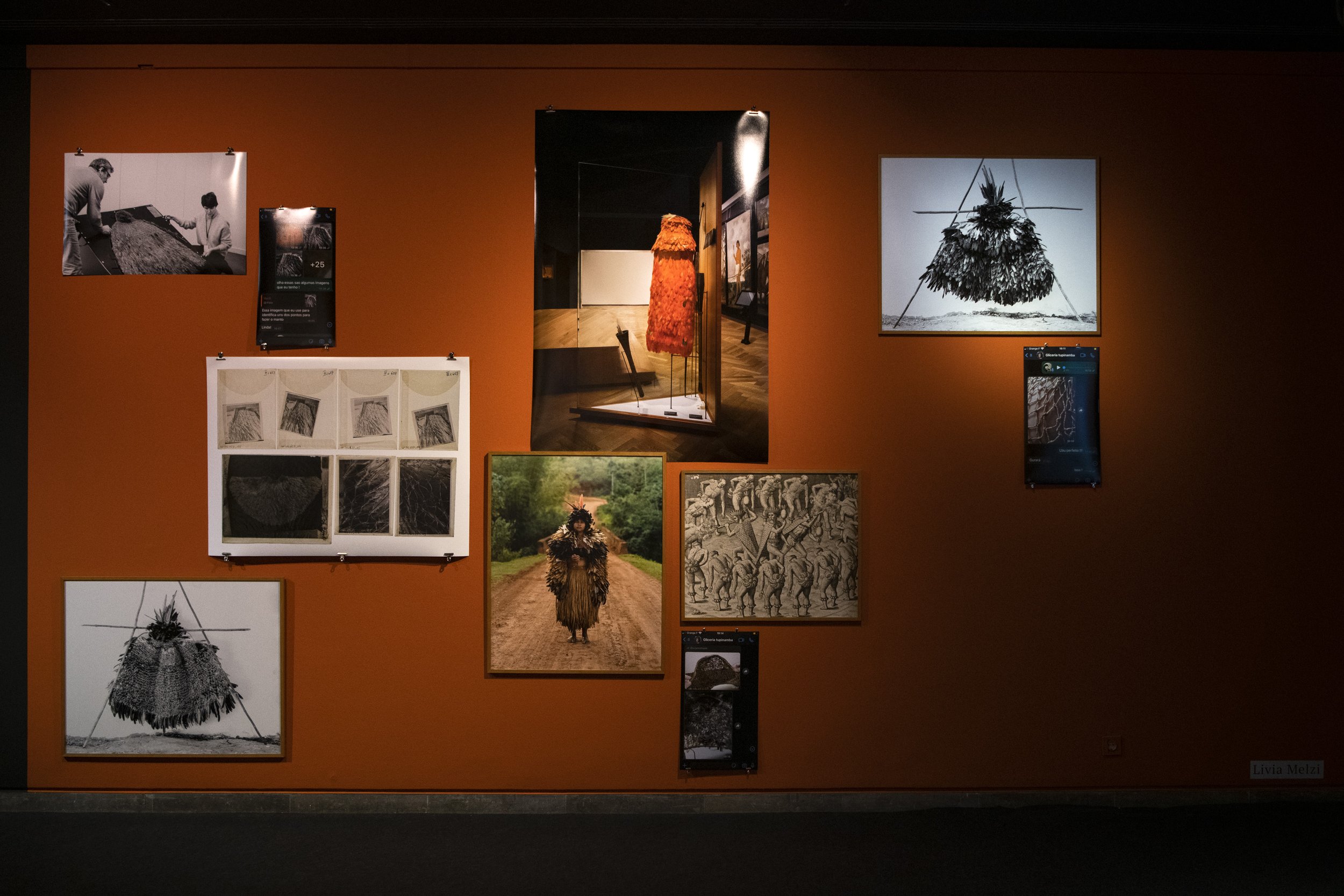






















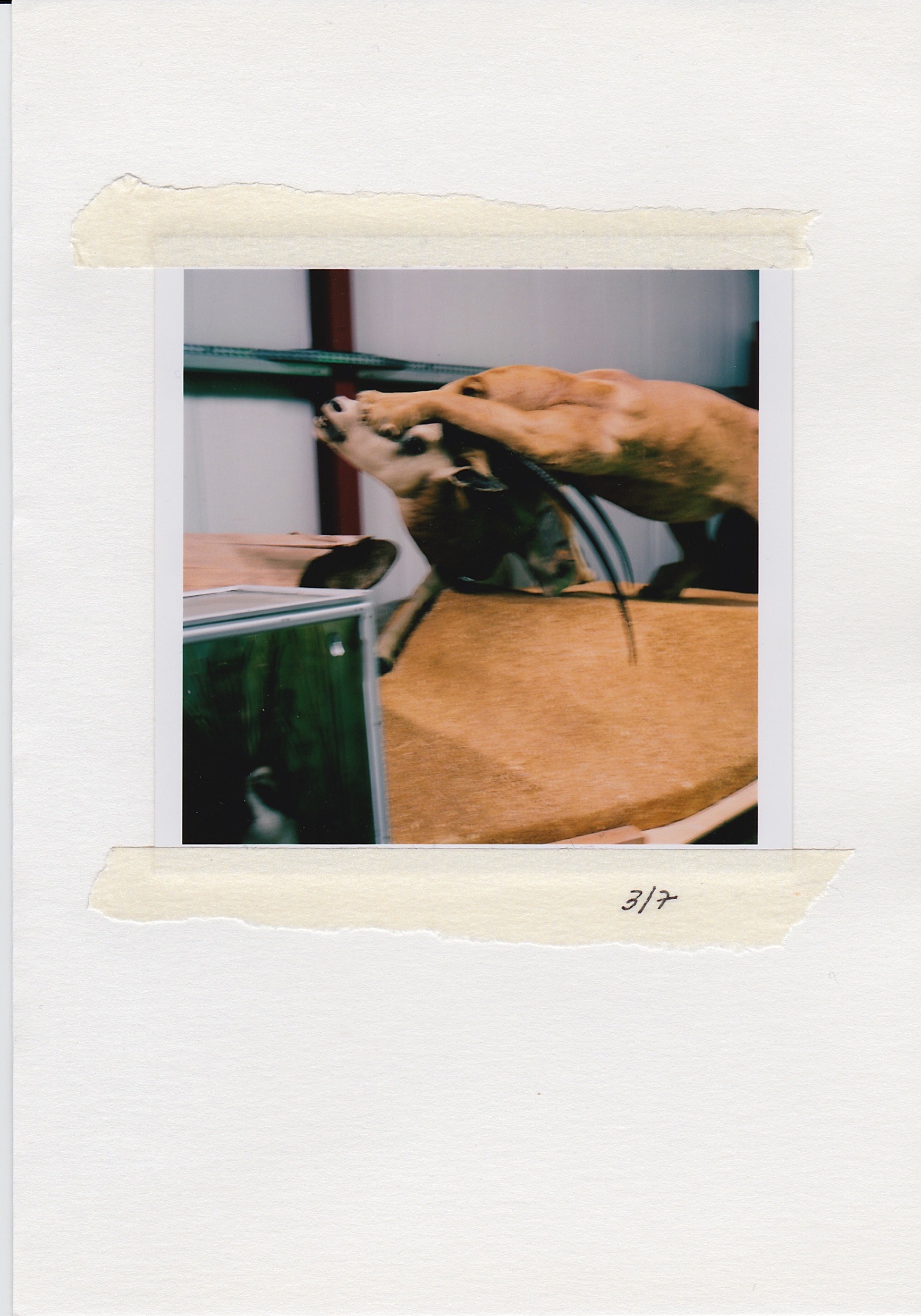

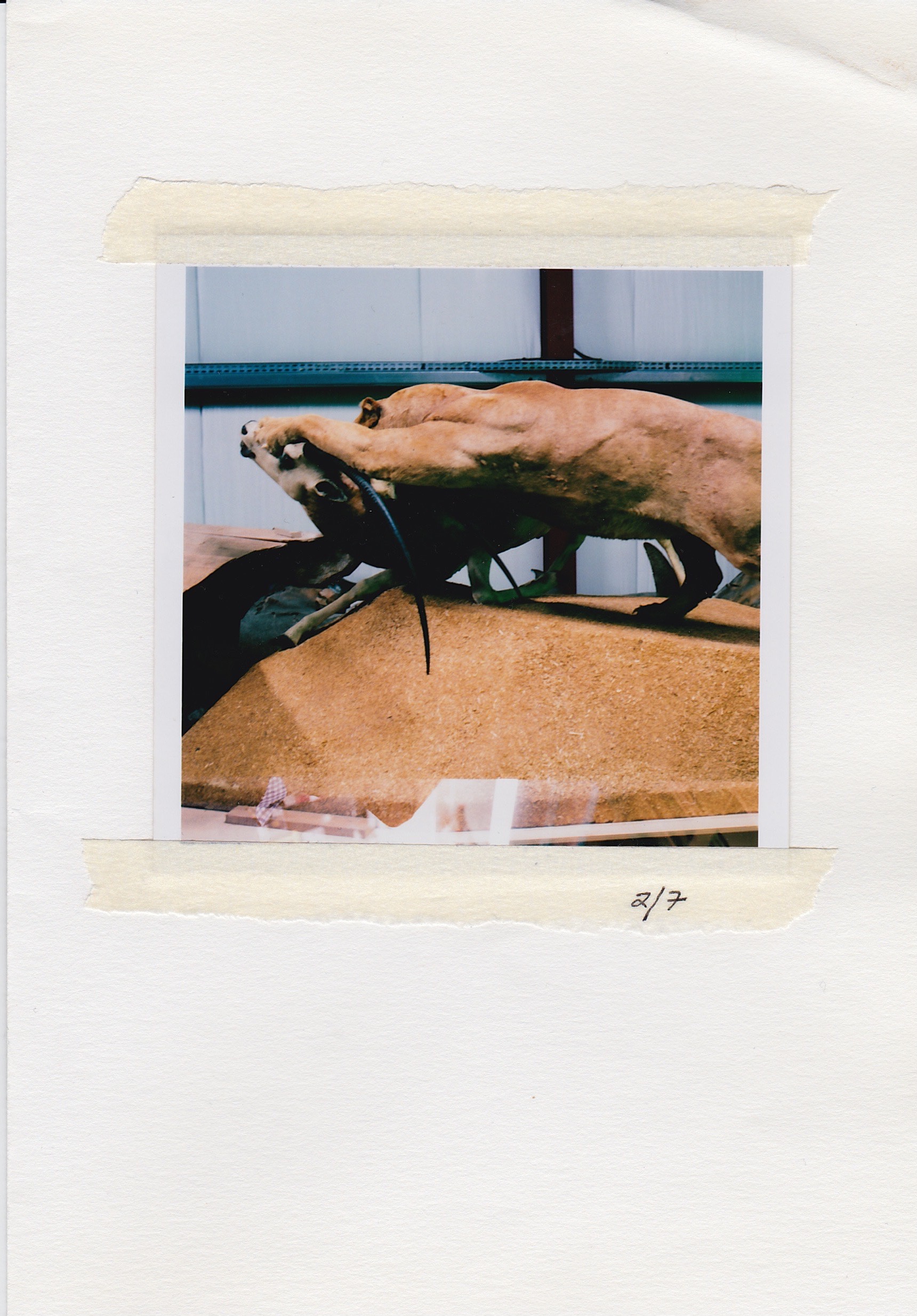




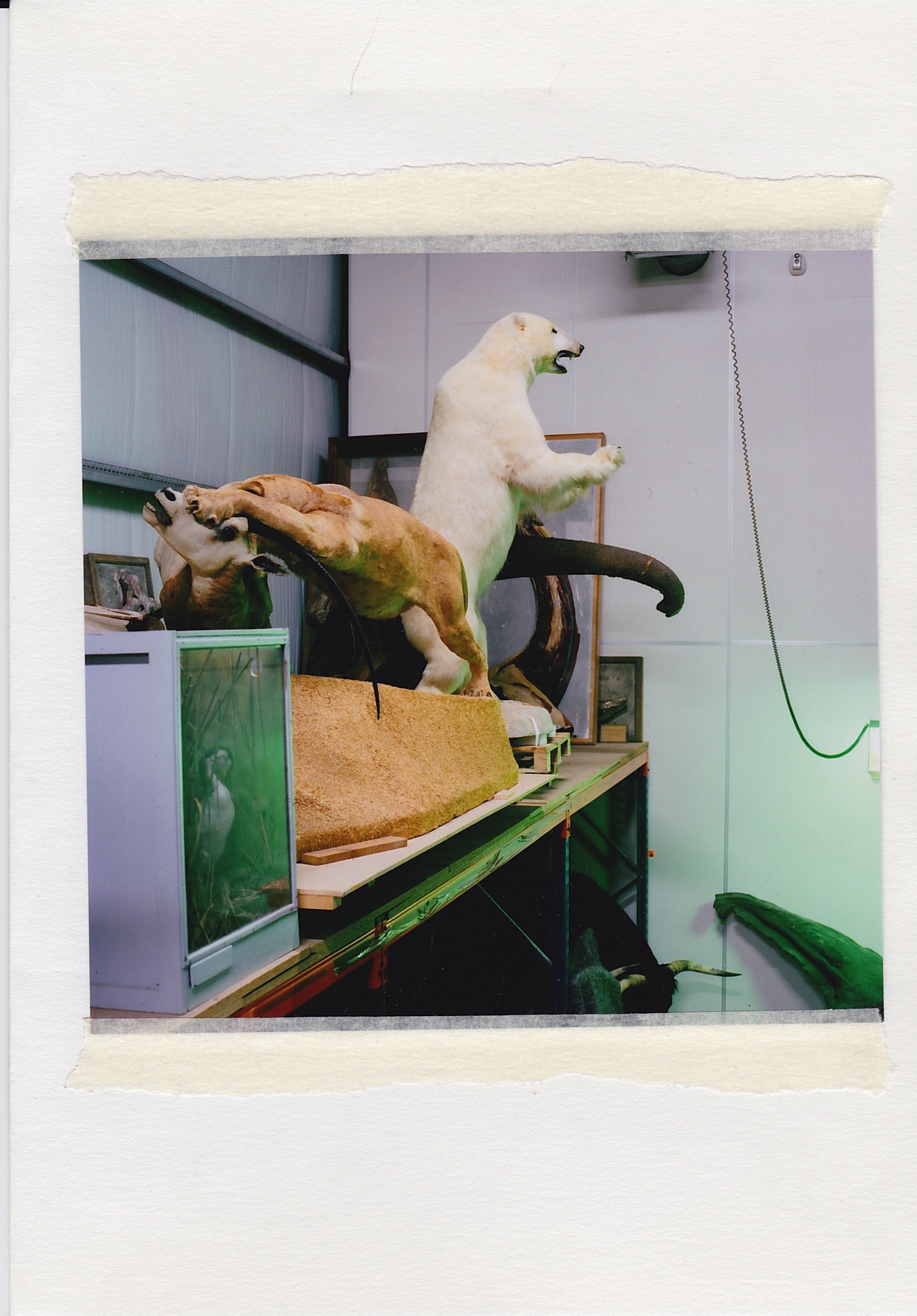

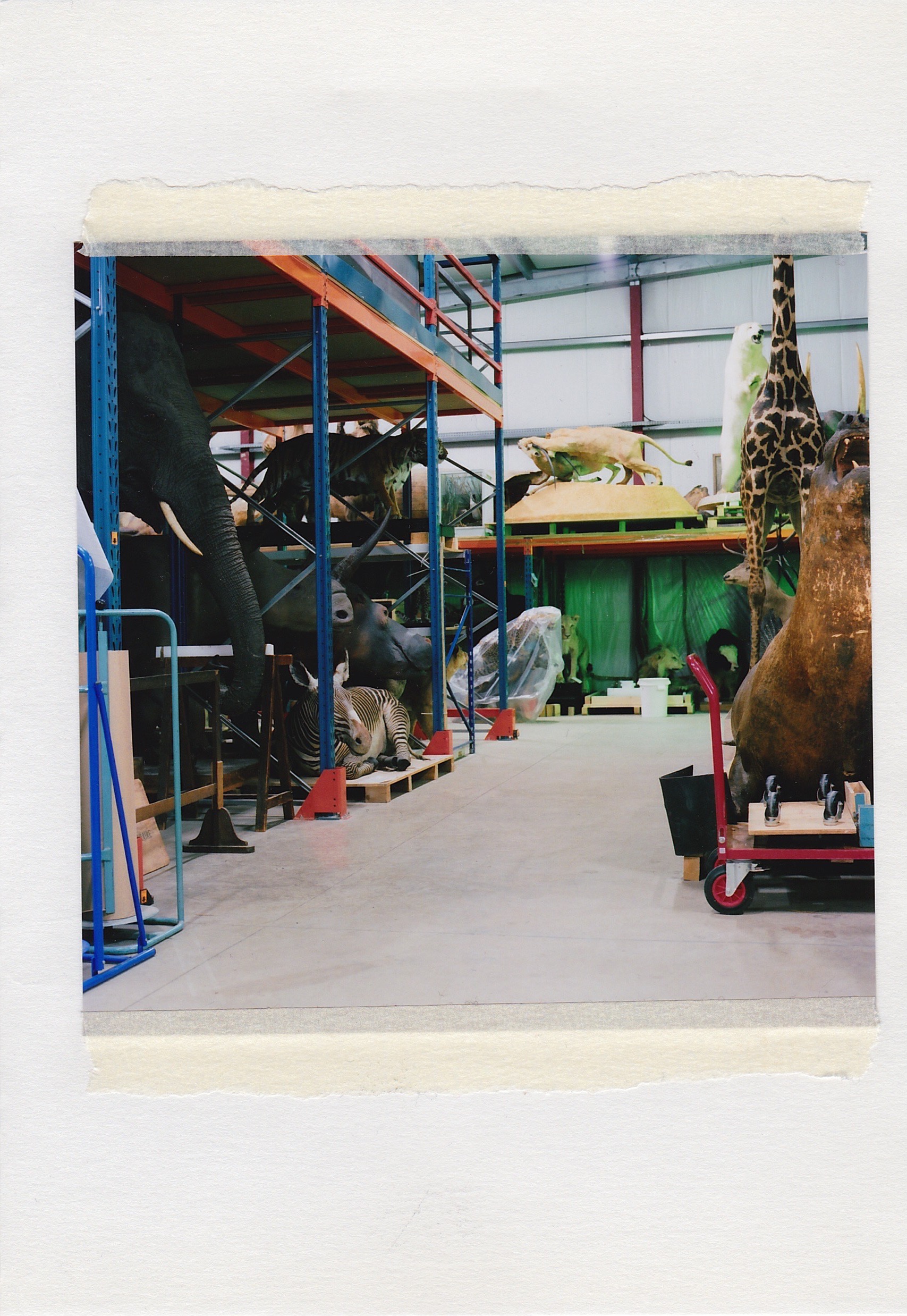






![Herbier [V] cópia.jpg](https://images.squarespace-cdn.com/content/v1/5c656b9e77b9032d88631231/1560416987176-L97BP7Z2INA4D83D4P2W/Herbier+%5BV%5D+c%C3%B3pia.jpg)
![Herbier [V] 02 cópia.jpg](https://images.squarespace-cdn.com/content/v1/5c656b9e77b9032d88631231/1560416807489-WCT4I00L259YAY0HXW95/Herbier+%5BV%5D+02+c%C3%B3pia.jpg)
